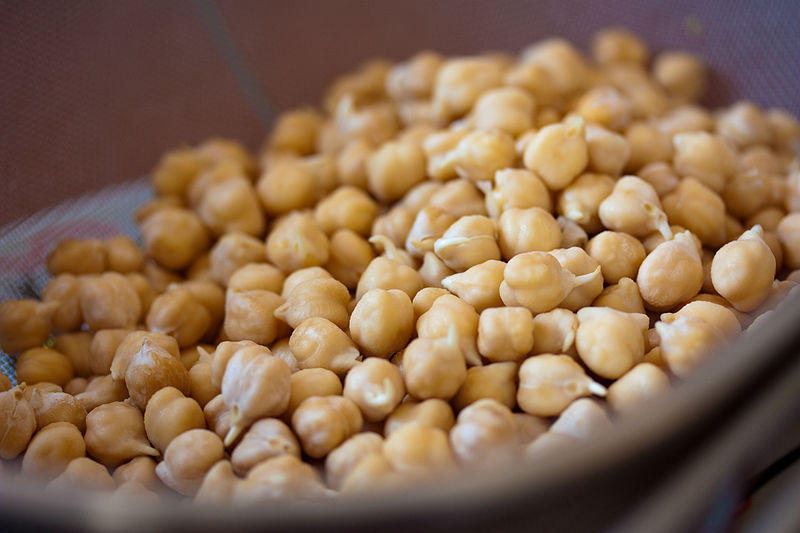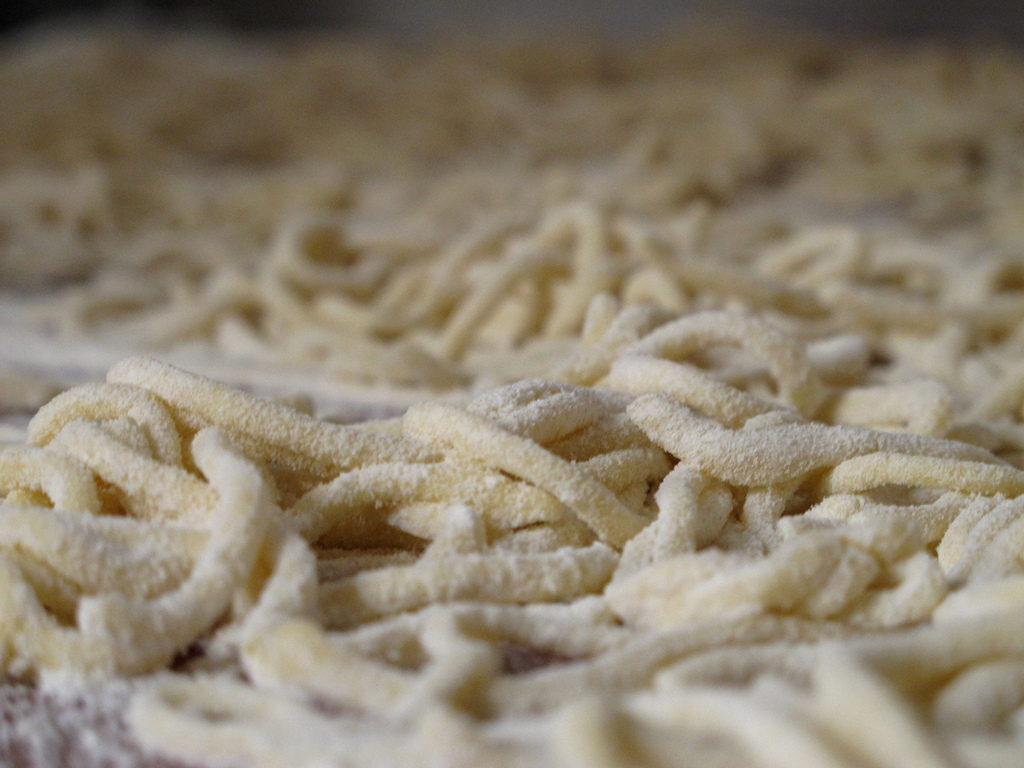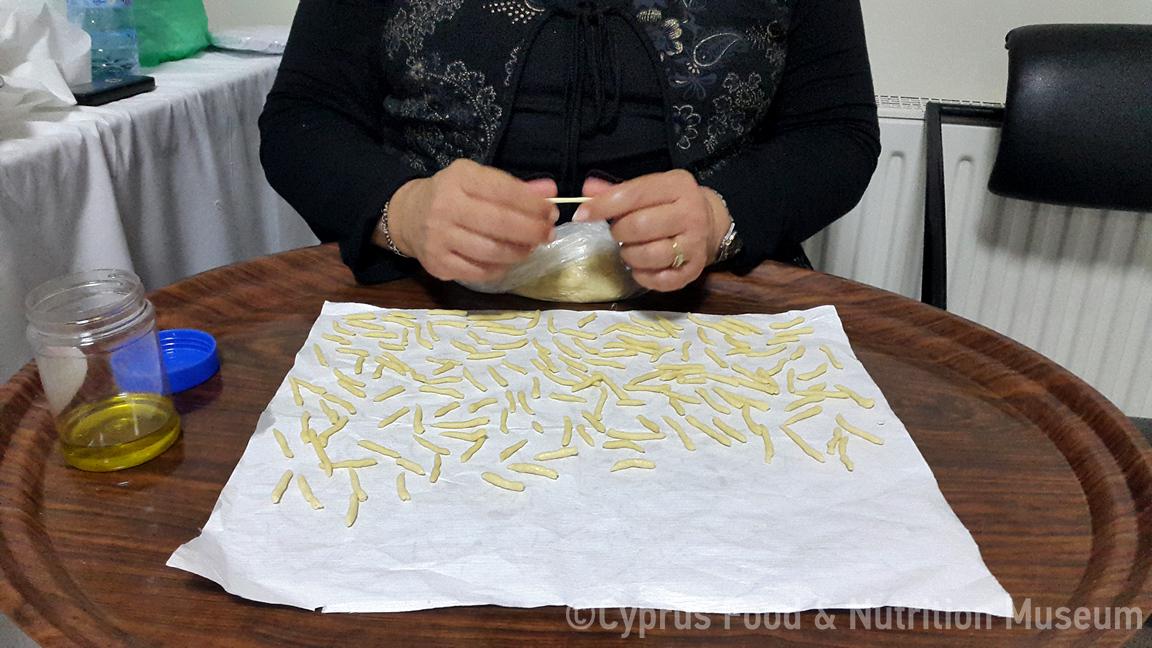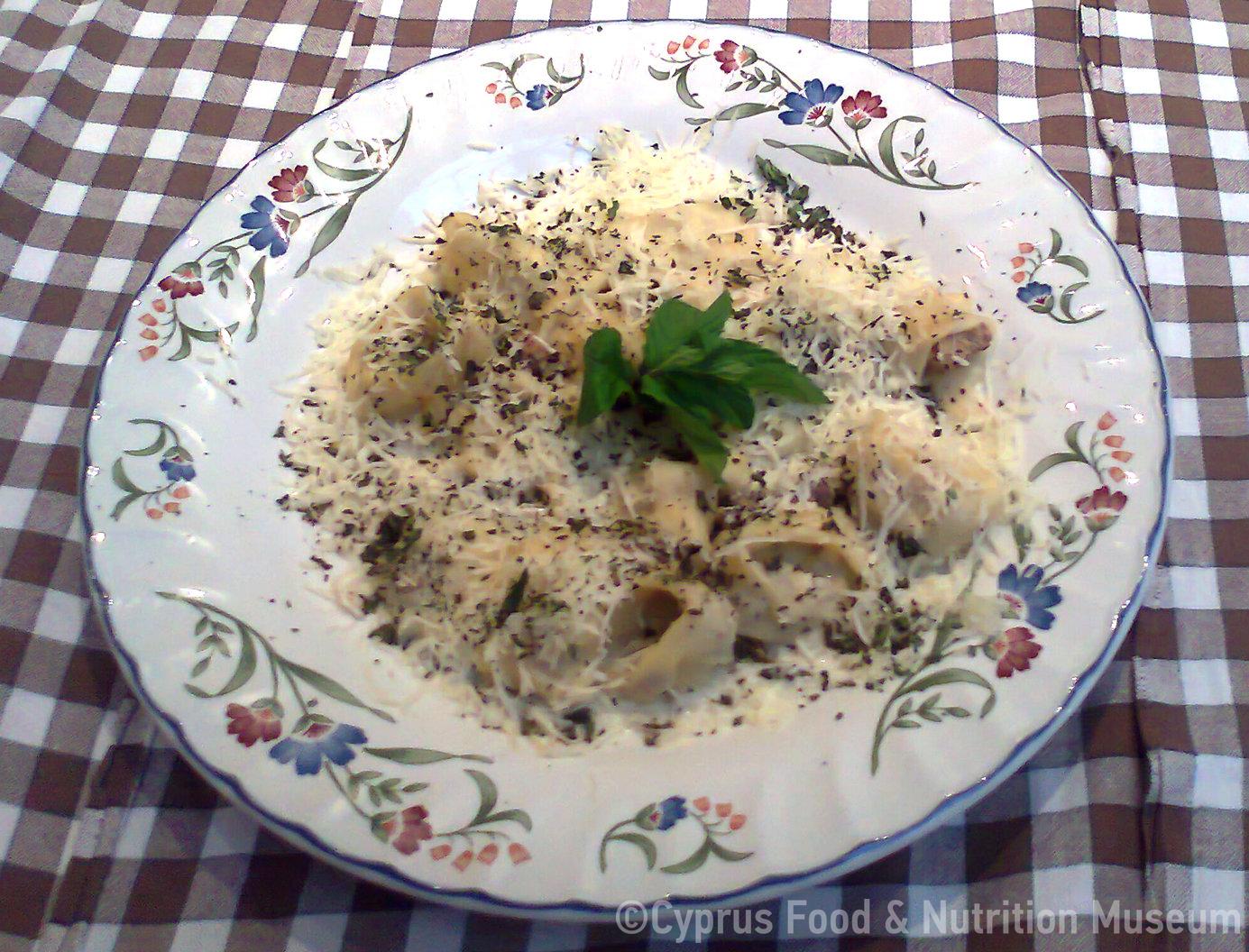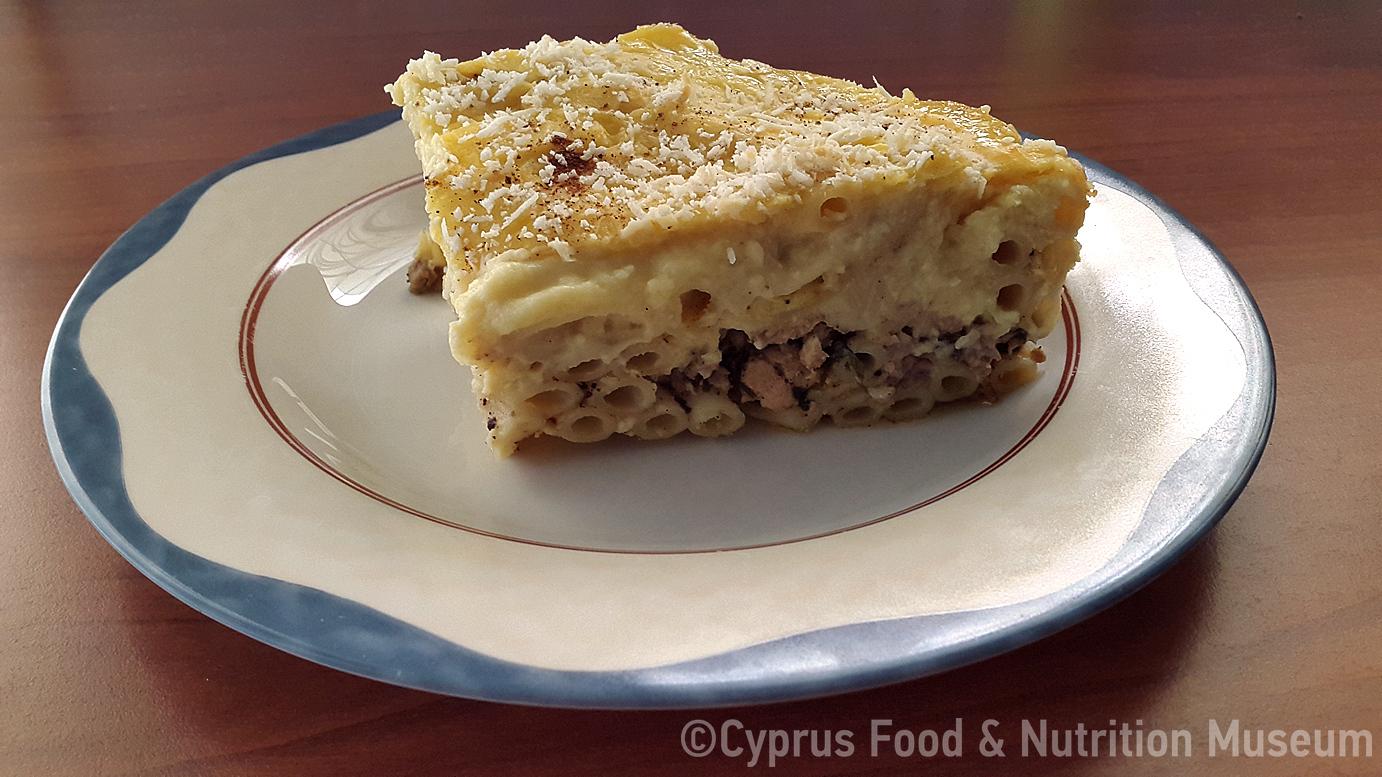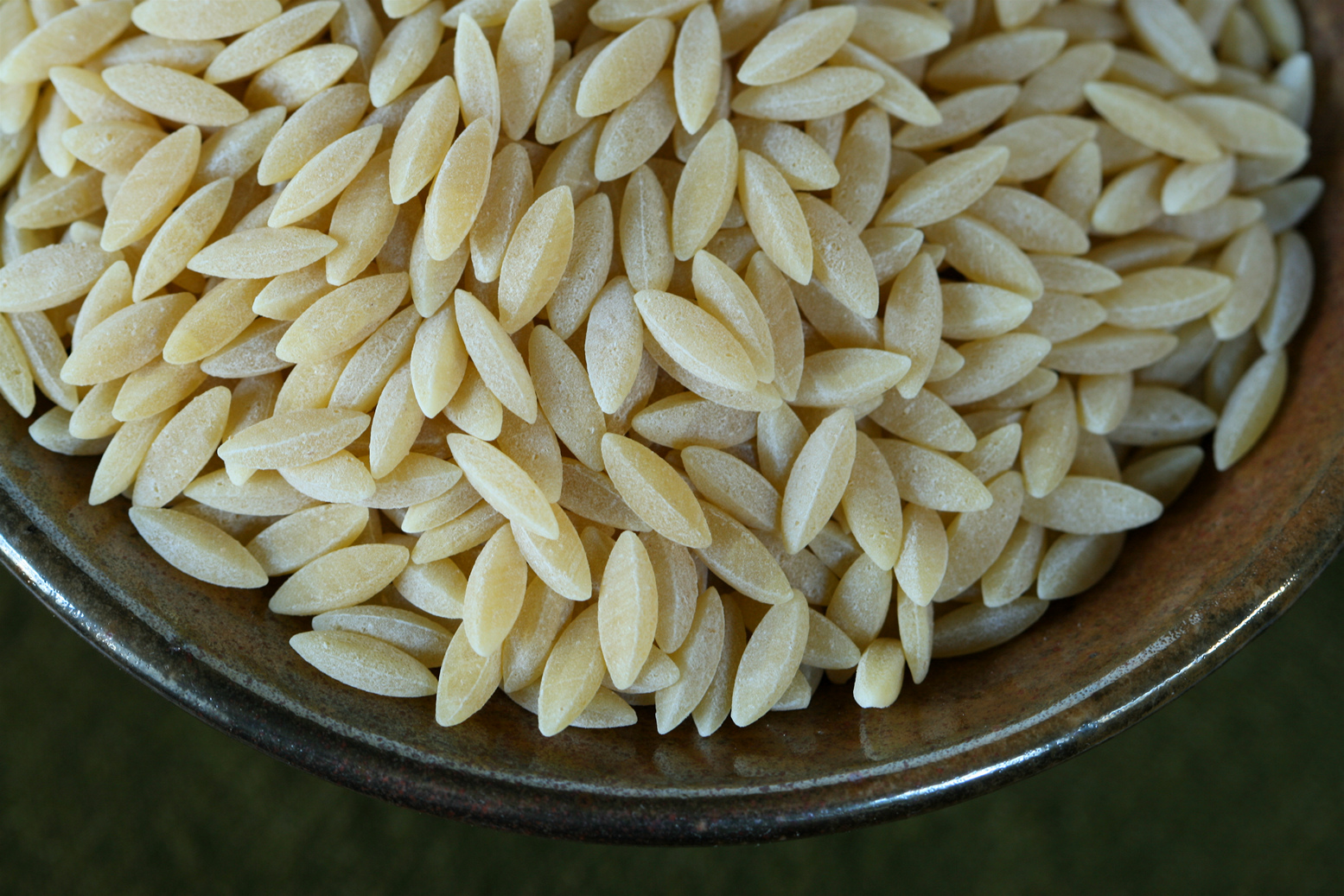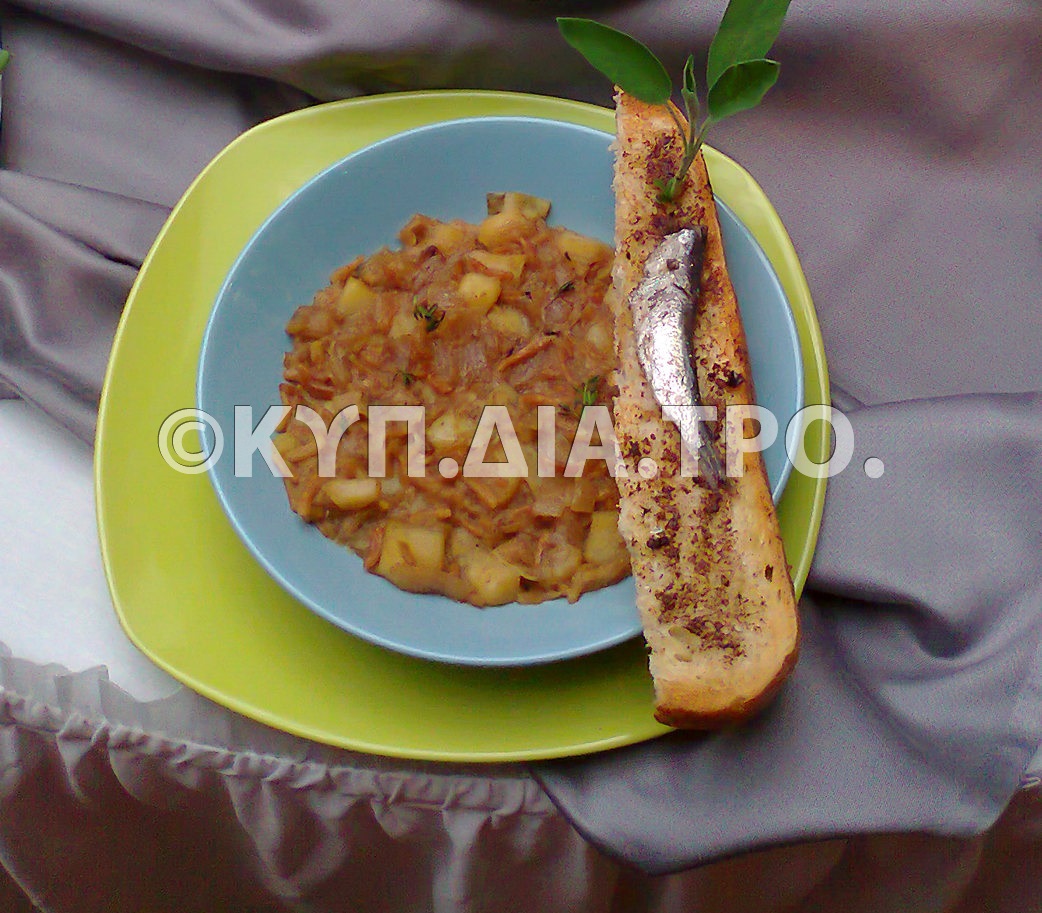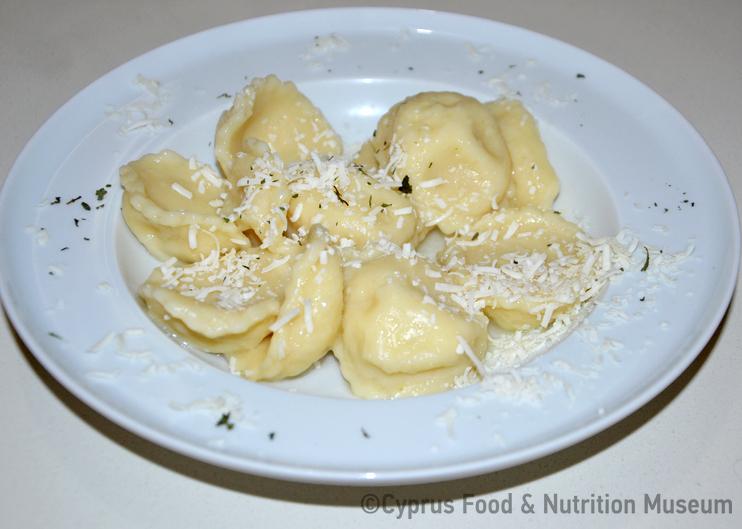Fides is a very thin, thread-like pasta cut into small pieces.
Name - Origin
Φιδές. Fides is a very thin, thread-like pasta used for the preparation of light soup (Babiniotis 2005, entry φιδές,ο, 1880).
A firm dough was prepared, which was then cut into long pieces. After kneading them well, they were placed upright in a bowl with a bit of olive oil. Each piece was rubbed with olive oil before being cut into fides, so that it would slide easily out of one's hands. Each piece of dough was placed on the top side of the left hand and the edge was pulled with the right hand to thin it enough to make fides. During this stage, fides was cut off and dropped into a weaved tray ( Michalopoulou-Charalambous 1998, 333).
Functional and symbolic role
A housewife would rarely make fides all by herself. On Saturday evenings or on holidays, she would call her neighbours and relatives to assist her (Michalopoulou-Charalambous, 1998 p. 333).
When making fides, women had a container with oil next to them as oil was needed in cutting fides easily. Fides was placed in weaved trays with special care, so that it would dry more easily. Fides was either dried under the sun or in the oven. It was stored in clay pots or in cloth bags. In many villages fides was stored after having been mixed with groats (Kypri - Protopapa, 2003 p. 262).
In Messaoria, the largest plain of the Republic of Cyprus, between the Troodos and Pentadaktylos mountains, fides was made before the summer, in order to be able to make the harvesters' pilaf. In the villages of Kyrenia district, fides was made in autumn or summer, when new olive oil was produced. In Paphos, fides was cut in winter to be made into soup (Kypri - Protopapa, 2003 p. 263).
In the area of occupied Skylloura in the Nicosia district, fides was made before a new baby was due so as to have it ready for soup for the new mother (Kypri - Protopapa, 2003 p.263).
In the occupied village of Gypsou in Famagusta district, fides was an exchangeable product at fairs. They would exchange fides for fruit or for ppalouze (dried grape must) (Kypri - Protopapa 2003, 263) (Kypri - Protopapa 2003, 263).
Fides was served as a soup or pilaf on its own or together with bulgur. It was also made into soup with trahanas (Kypri - Protopapa, 2003 p.264).
Fides was also customary at weddings (Kyprianou, 1992 pp. 69-70).
Additional information and bibliography
Women's gatherings to cut fides were also an opportunity to hear all the village news and to spend time pleasantly. As soon as they were finished with making fides, they would wish to the housewife to have nice fides meals and they would eat a treat offered by the hostess (Michalopoulou-Charalambous, 1998 p. 333).
Kypri Th. - Protopapa K. A. (2003), Παραδοσιακά ζυμώματα της Κύπρου. Publications of the Centre for Scientific Research, XVIII, Nicosia.
Kyprianou P. Chr. (1992) «Λαογραφικά του Παλαίκυθρου», Λαογραφική Κύπρος 42 (παράρτημα), 1-101.
Michalopoulou-Charalambous Ch. (1998) Περιστερωνοπηγή. Από την αρχαιότητα μέχρι το 1974, Προσφυγικό σωματείο «Ένωση Περιστερωνοπηγιωτών», Nicosia.
Babiniotis G. (2005), Λεξικό της Νέας Ελληνικής Γλώσσας. Με σχόλια για τη σωστή χρήση των λέξεων. Ερμηνευτικό, Ορθογραφικό, Ετυμολογικό, Συνωνύμων-Αντιθέτων, Κυρίων Ονομάτων, Επιστημονικών Όρων, Ακρωνυμίων, Centre for Lexicology, Athens, Greece.
Eleni Christou, Argyro Xenophontos, Demetra Demetriou
